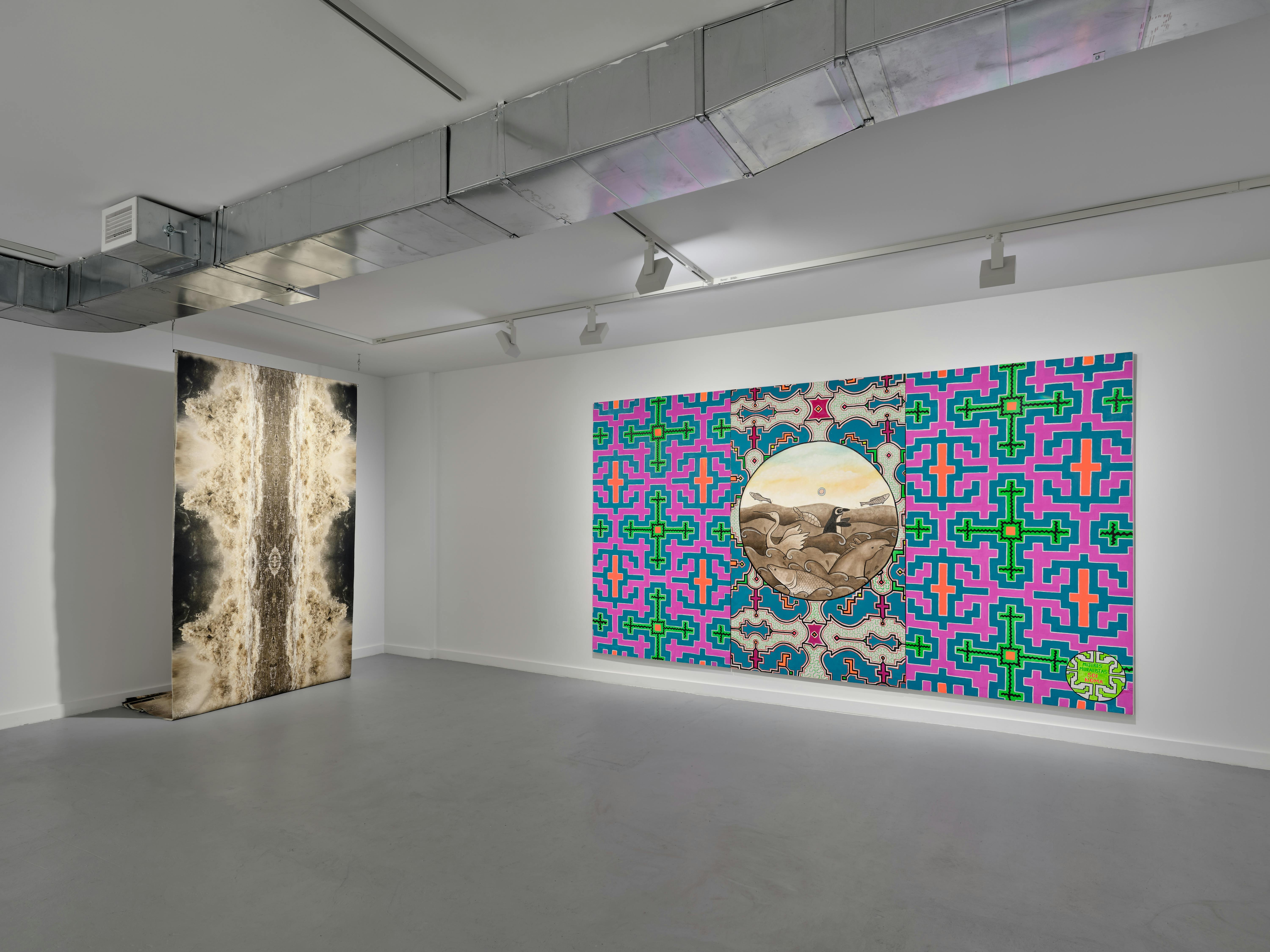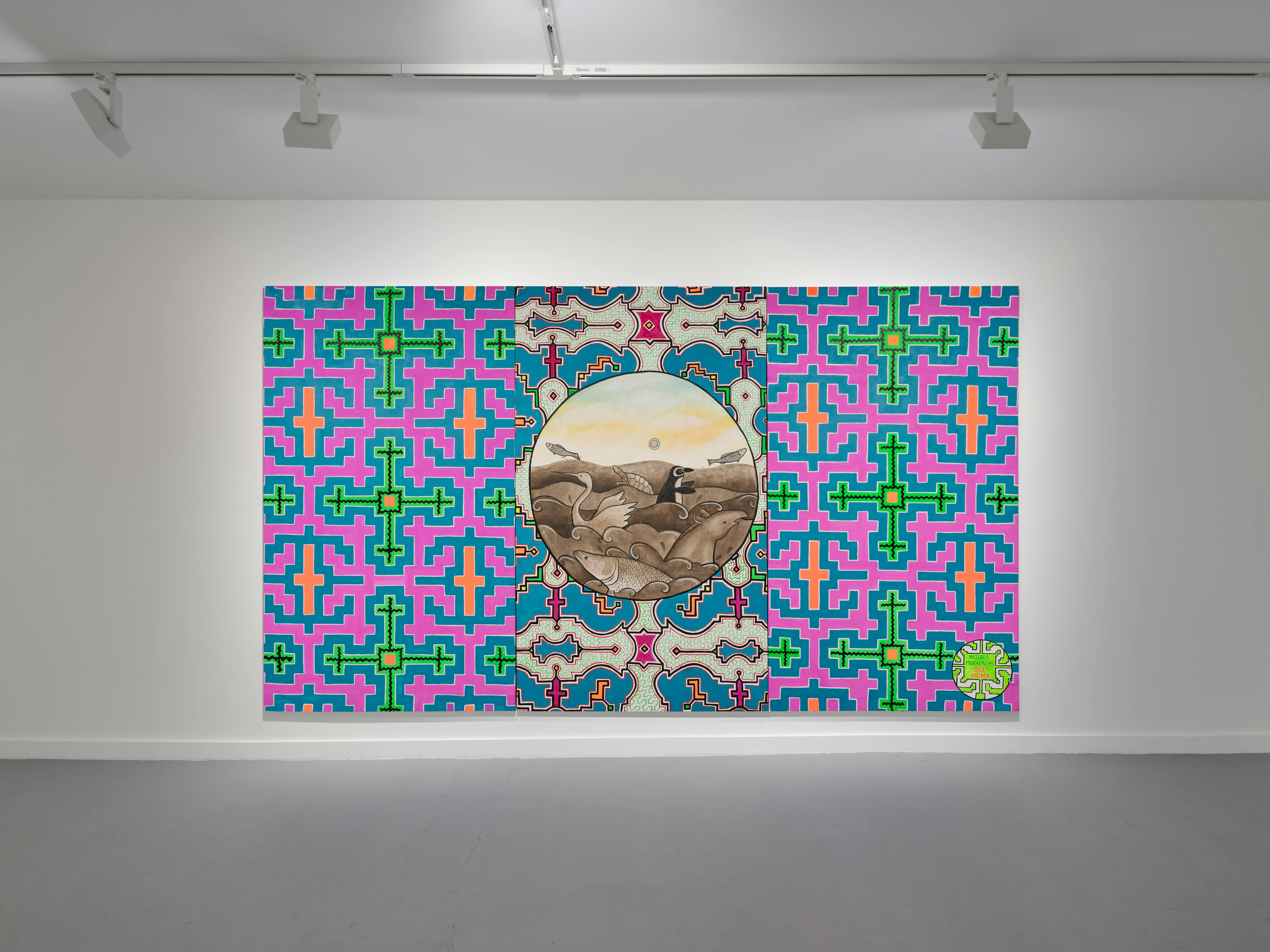The Institute for Studies on Latin American Art (ISLAA) is pleased to announce The Precious Life of a Liquid Heart, on view at their new Tribeca headquarters from October 28, 2023 through February 10, 2024. Featuring works by artists Carolina Caycedo, Chonon Bensho, Nádia Taquary, Seba Calfuqueo, UÝRA, and the collective Mujeres Muralistas Soi Noma, the exhibition inspires environmental consciousness by offering alternatives to the colonial ways of understanding nature.
Concentrating approximately a third of the planet's freshwater resources, Latin America has the world’s highest ratio between the number of inhabitants and the volume of river waters, but with the expansion of colonialistic, extractive practices, an unprecedented water crisis has been growing in the region. Today, more than 150 million people live in areas without access to clean water. Climate change, the increasing density of urban areas, the spread of illegal and legal mining, and the intensification of monoculture farming for export have radically worsened scenarios of drought, contamination, and chemically induced death of these rivers.
In this context, The Precious Life of a Liquid Heart highlights cosmologies present in Latin America that refuse to reduce water to a “natural resource” to be exploited and commodified. For different Indigenous and Afro-diasporic communities in the region, rivers are their ancestors, deities, the houses of the spirits, and the original source of life. This perspective makes all humans responsible for offering care and devotion to these waters.
Curated by ISLAA Chief Curator Bernardo Mosqueira, this exhibition aims to help reconnect people with their responsibilities to these bodies of water. Through drawings, embroidery, installation, painting, photographs, sculpture, and video, visitors are invited to reimagine the world as an enchanted place. Merging the waters of Latin American rivers onto the banks of the Hudson River, The Precious Life of a Liquid Heart highlights how Latin American ways of knowing and living can offer new and ancestral solutions to the most important and pressing global problems.
INSTALLATION VIEWS
Bernardo Mosqueira is Chief Curator at the Institute for Studies on Latin American Art (ISLAA). He is also the founder and artistic director of Solar dos Abacaxis, an institution for experimentation in art, education, and social transformation in Rio de Janeiro, and since 2011, he has directed Premio FOCO ArtRio, a national award for emerging artists. Previously, Mosqueira was the ISLAA Curatorial Fellow at the New Museum, organized the performance festival Venus Terra, and worked as a curator at Galeria de Arte Ibeu. He has been curating exhibitions, editing books, teaching, and contributing texts to art publications since 2010; was awarded the Premio Lorenzo Bonaldi in 2017; and cofounded Fundo Colaborativo, the first emergency fund for artists in Brazil, in 2020. His recent exhibitions include Miriam Inez da Silva at the Museu da República, Brasília (2021); Castiel Vitorino Brasileiro: Eclipse at the Hessel Museum of Art in Annandale-on-Hudson, NY (2021); and Daniel Lie: Unnamed Entities at the New Museum, New York (2022).








